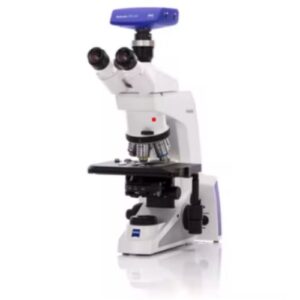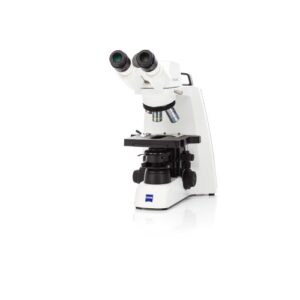Until recently, microscopes were limited in the level of detail they could reveal about objects being observed. This began to change with the development of confocal microscopy. Confocal microscopy is a type of microscope that uses lasers to produce high-resolution images of objects.
Confocal microscopes work by shining a laser beam onto the object being observed. The light from the laser beam is then reflected off of the object and onto a detector. The detectors in a confocal microscope are very sensitive, so they can pick up even the smallest details of the object being observed.
In this blog post, we will share an introduction to Confocal Microscopy, how it works, and why it’s important. We will also take a look at some of the applications of confocal microscopy in research and medicine.
Keep reading and stay tuned to discover the confocal microscopy principles, as well as confocal microscopy applications.
A Brief Introduction to Confocal Microscopy As A Whole
Microscopes have been around for centuries. The first compound microscope was invented in the 16th century. Since then, microscopes have come a long way, and they continue to evolve as new technologies are developed.
The invention of the light microscope in the 19th century was a major breakthrough in microscopy. It allowed scientists to see much smaller objects than ever before.
With the development of technologies, microscopes have become more powerful tools for research. One such example is confocal microscopy.
What is Confocal Microscopy?
Confocal microscopy is an imaging technique. It creates high-resolution 3D images of cells and tissues.
Unlike traditional light microscopes, which produce images of all the light that passes through a sample, confocal is different. Confocal microscopes use a laser to scan a specimen and have an image one point at a time.
This allows for much more detailed images, as well as the ability to create 3D images.
Also, because the laser beam is focused on a very small area, confocal microscopes can produce images with very little background noise.
This is important for applications where precise imaging is essential. For instance, medical diagnostics or studying cells at the sub-cellular level.
How Does Confocal Microscopy Work?
A confocal microscope typically consists of three main parts. A light source (usually a laser), a microscope objective lens, and a detector.
The laser is used to scan the specimen. The light that is reflected or scattered off of the specimen is collected by the objective lens and directed toward the detector. The detector then converts the collected light into an electrical signal, which is used to create an image of the specimen.
Furthermore, a scanning laser can produce images with a very high spatial resolution. They can image tiny objects in great detail.
Additionally, because the light is focused, confocal can also produce images with very high contrast. They will have very minimal background noise.
Why is Confocal Microscopy Important?
Confocal microscopy is an important tool for many different fields. All ranging from basic research to medicine. In basic research, confocal microscopy is often used to study the structure and function of cells and tissues.
For example, scientists use confocal microscopes to study how cells interact with each other. They learn how they change over time, or how they respond to different stimuli.
In medicine, confocal microscopes are often used for diagnostics. For instance, detecting cancerous cells or analyzing tissue samples.
Additionally, because confocal microscopy can produce 3D images, it is also being used more and more for surgery planning. It helps with guiding the surgery itself.
Not to mention, super-resolution microscopy is pushing the boundaries of what microscopes can do.
Super-resolution microscopes allow for even higher resolutions than traditional confocal microscopes. Thus, we will continue to see new and exciting applications for confocal microscopy in the future.
Applications of Confocal Microscopy
Confocal microscopy has a wide range of applications in both research and medicine. Here are just a few examples:
Studying the Structure and Function of Cells and Tissues
As we mentioned before, confocal microscopes are often used to study the structure and function of cells and tissues.
For example, scientists use them to study how cells interact with each other. They can also assess how they change over time, or how they respond to different stimuli.
Analyzing Tissue Samples
In medicine, confocal microscopes are often used for diagnostics, such as detecting cancerous cells or analyzing tissue samples.
Planning and Guiding Surgery
Because confocal microscopy can produce 3D images, it is also being used more and more for surgery planning, as well as for guiding surgery itself.
Studying Live Cells
One of the advantages of confocal microscopy is that it can be used to study live cells without damaging them. This is important for many applications, such as studying how cells divide or how they migrate within a tissue.
Tracking Molecular Interactions
Another advantage of confocal microscopy is that it can be used to track the movement of molecules within cells. This is important for many different research applications. For example, studying how drugs work or how diseases progress.
Confocal microscopy is a powerful tool that has a wide range of applications in medicine. We hope this introduction has given you a better understanding of what confocal microscopy is and why it’s so important.
Learn More About Confocal Microscopy
Confocal microscopy is a powerful tool that has a wide range of applications in both research and medicine. This article has provided a brief introduction to confocal microscopy, including how it works and why it is important.
If you would like to learn more about confocal microscopy, get in touch and we will provide some great resources for you.




